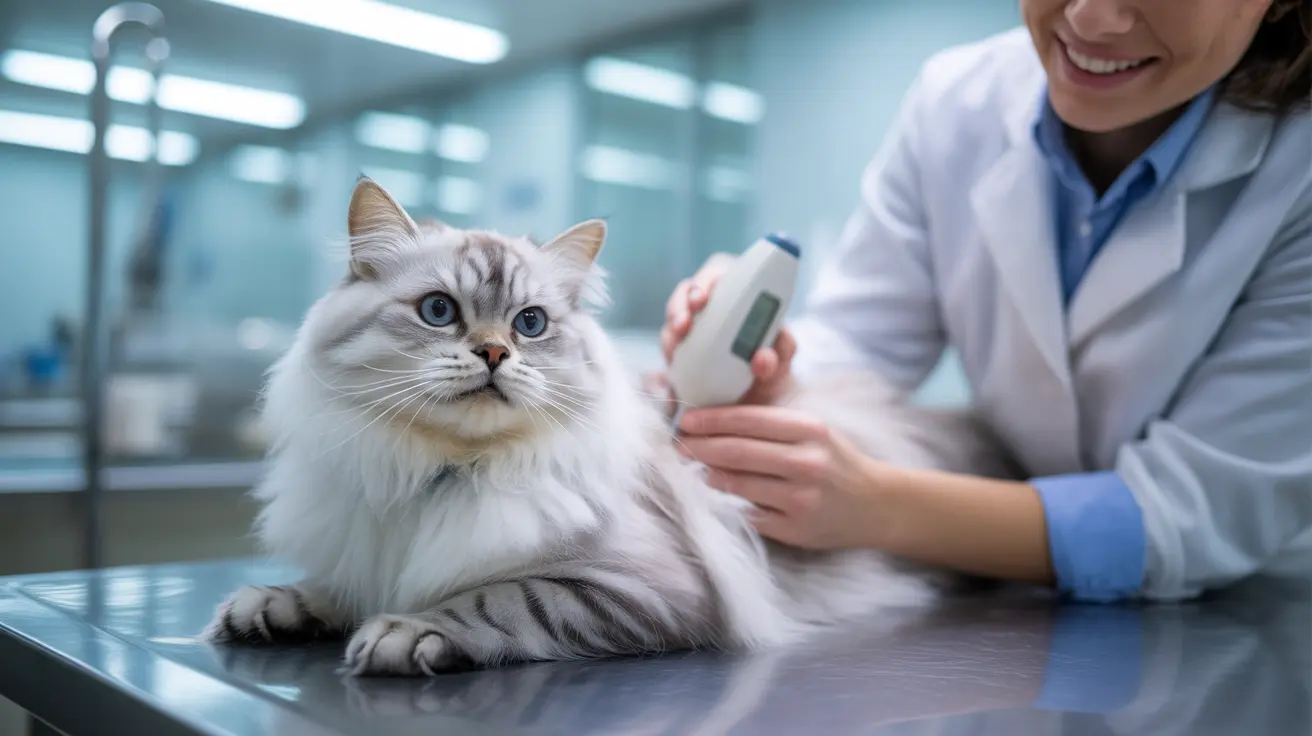If you've noticed your cat struggling during bathroom visits or spotted blood in their stool, your feline friend might be dealing with a rectal polyp. These benign growths, while relatively uncommon in cats, can cause significant discomfort and require proper veterinary attention for successful treatment.
In this comprehensive guide, we'll explore everything cat owners need to know about rectal polyps, from identifying early warning signs to understanding treatment options and long-term prognosis.
What Are Rectal Polyps in Cats?
Rectal polyps are small, benign growths that develop from the mucous membrane lining of a cat's rectum. These tissue formations can appear either as stalked growths (pedunculated) or flat, raised areas (sessile) on the rectal wall. While rarely life-threatening, these growths can significantly impact your cat's quality of life if left untreated.
Identifying the Signs and Symptoms
Early detection of rectal polyps is crucial for effective treatment. Watch for these common indicators:
- Bright red blood in the stool
- Straining during defecation
- Frequent licking of the anal area
- Changes in stool consistency
- Visible lumps near or protruding from the anus
- Signs of discomfort while sitting
Diagnosis Process
When you bring your cat to the veterinarian with suspected rectal polyps, they will typically perform:
- A thorough physical examination
- Digital rectal examination
- Colonoscopy or endoscopy for visual confirmation
- Tissue biopsy if necessary
- Blood work to rule out other conditions
Treatment Options and Recovery
The primary treatment for cat rectal polyps is surgical removal. This can be accomplished through:
- Traction polypectomy (removal through the anus)
- Traditional surgery for larger or multiple polyps
- Post-operative care and monitoring
Most cats recover quickly after polyp removal, with excellent long-term prognosis when the entire polyp is successfully removed.
Prevention and Long-term Management
While there's no guaranteed way to prevent rectal polyps, certain measures can help reduce risks and prevent recurrence:
- Regular veterinary check-ups
- Prompt attention to digestive issues
- Maintaining good gut health
- Managing underlying inflammation
- Following post-treatment care instructions
Frequently Asked Questions
What are the common signs that my cat might have a rectal polyp?
The most common signs include blood in the stool, straining during defecation, excessive anal licking, and visible lumps near or protruding from the anus. Some cats may also show signs of discomfort while sitting or during bowel movements.
How do veterinarians diagnose rectal polyps in cats?
Veterinarians typically diagnose rectal polyps through physical examination, digital rectal examination, and visual confirmation using colonoscopy or endoscopy. They may also perform tissue biopsies to rule out malignancy.
What treatment options are available for cat rectal polyps, and is surgery always necessary?
Surgery is the primary and most effective treatment for rectal polyps in cats. The most common approach is surgical removal through traction polypectomy or traditional surgery for larger polyps. Alternative treatments are generally not effective, making surgery necessary for resolution.
Can rectal polyps in cats turn cancerous or cause serious complications?
While rectal polyps in cats are typically benign and rarely become cancerous, they can cause complications if left untreated, including chronic inflammation, infection, and severe discomfort. Malignant transformation is extremely rare but possible.
How can I help prevent my cat from developing rectal polyps or recurring problems?
While prevention isn't always possible, you can reduce risks by maintaining regular veterinary check-ups, addressing digestive issues promptly, and following post-treatment care instructions. Managing underlying inflammation and maintaining good gut health may also help prevent recurrence.
If you notice any concerning symptoms in your cat, particularly related to their bathroom habits or signs of discomfort, don't hesitate to consult your veterinarian. Early detection and treatment of rectal polyps can help ensure the best possible outcome for your feline companion.






